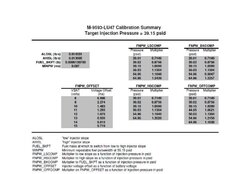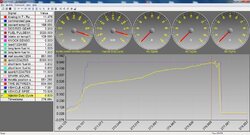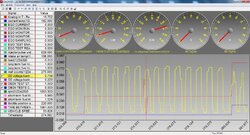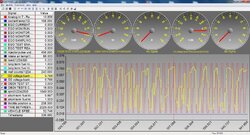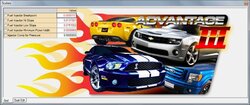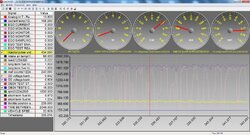the minimum pulsewidth in all tunes should be set to 0 as per decipha, no exceptions
you should never modify the lambses to get the wideband to spit out a different AFR, as soon as it goes into closed loop it will be correcting for that error and when adaptives have corrected your kam's will be all over the place and completely inaccurate
the siemens deka series of injectors are one of the most accurate injectors available, I highly recommend sticking with their posted info and dialing in your fuel by raping the maf curve. I can guarantee you that your actual flow characteristics will not vary that much if any from the published data from siemens.
Here's the link from my website with published injector specs, i recommend plugging these in to your tune, the LU60 are the siemens deka 60s
http://www.efidynotuning.com/injdata.htm
as for kicking up the fuel pressure for more headroom, I always recommend running 55psi of base fuel pressure if you have less than 60lb injectors, note that in my published injector data above it specifies 55psi for injectors below 60s as well, you'll see the published data above for LU47s are correct for 55psi base fuel pressure, simply copy and paste
for reference, when altering the fuel pressure you need to adjust the high slope, low slope, breakpoint, and injector offset, all else stays the same (theoretically)
here's some good info on injector pressure
http://info.efidynotuning.com/inj.htm
can you provide your 90mm flow data from the bench? depending on who you sent it to there is a very very very good possibility that they sent you back a generic curve, I know that sounds screwed up but it happens all the time
here's an actual 90mm flow bench data from nick at pmas, compare this to your data and see what you've got
http://info.efidynotuning.com/maf.htm

